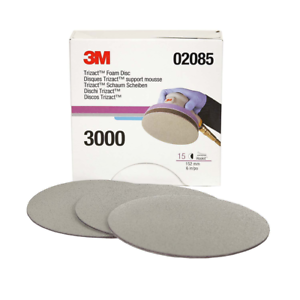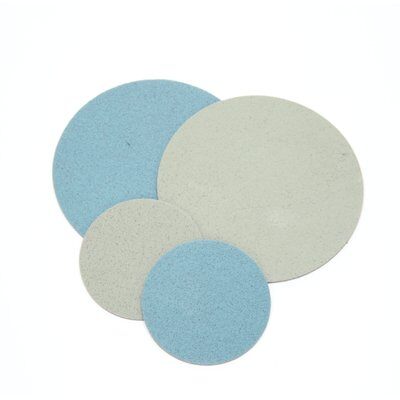Details
Our 3M™ Trizact™ Hookit™ Foam Abrasive Disc removes fine sand scratches on painted surfaces to reduce the amount of time spent compounding. Three-dimensional mineral abrasive structures are distributed uniformly across the disc surface and wear evenly for consistent finishes, longer disc life and reduced material costs. Foam backed discs are part of the 3M™ Perfect-It™ Paint Finishing System.
Advanced Abrasives for Collision Repair
As part of our Perfect-It™ Paint Finishing System, 3M™ Trizact™ Hookit™ Foam Abrasive Discs help reduce the time and material required for compounding, creating significant operating efficiencies during spot and large panel repairs. Our Trizact™ abrasives remove fine grade sand scratches while staying sharper longer, reducing material costs. In specific situations, the abrasive allows operators to reduce or eliminate additional materials, like wool compounding pads. They can also save time, reducing and even eliminating entire grade sequences such as compounding for more efficient operations. Foam backing provides plenty of control and consistent contact with the surface, great for preserving orange peel. Trizact™ Hookit™ abrasive discs work with our Hookit™ disc pads and soft interface pads for responsive application and fast, efficient change outs during the paint finishing process.
Use Trizact™ 3000 grit foam discs for removing 1200-1500 grade sand scratches, and select Trizact™ 5000 grit foam discs for removing 3000 grade sand scratches on painted surfaces. Use with 3M Hookit™ Disc Pad 05551 or 20427 and 3M Hookit™ Soft Interface Pad 05777 prior to the use of 3M™ Perfect-It™ machine polishes and pads.
About Our Trizact™ Abrasives
For more predictable finishes and improved, consistent quality, 3M™ Trizact™ products feature 3-dimensional structures that are uniformly distributed over the surface of the abrasive. These patterned, precise mineral structures contain multiple layers of abrasive mineral. As the structures wear, fresh, sharp mineral is exposed. The result is that the abrasive cuts faster, allows for precise finish control, and stays sharper longer — operators can even reduce grade sequences during collision repair, requiring fewer process steps and fewer abrasive products



